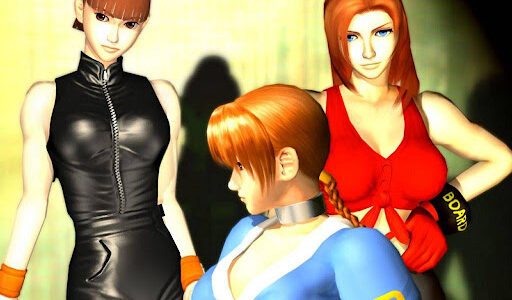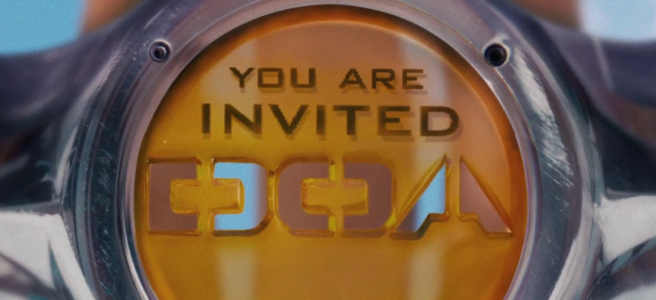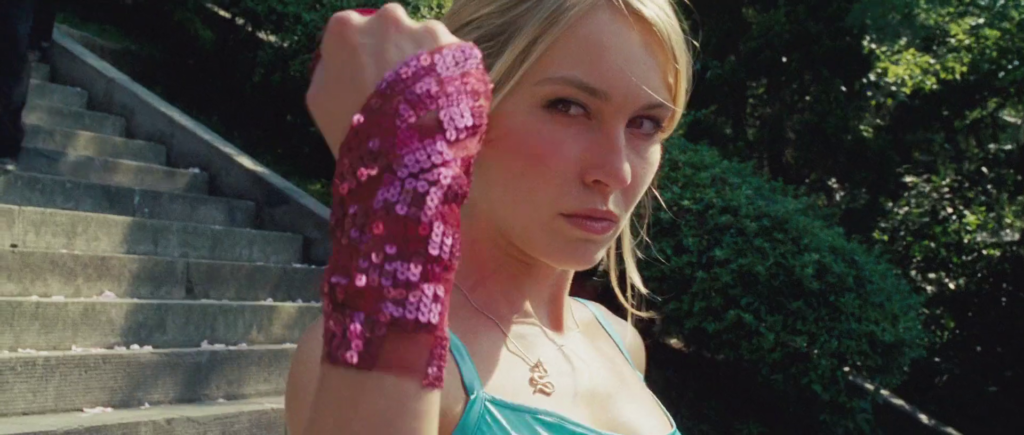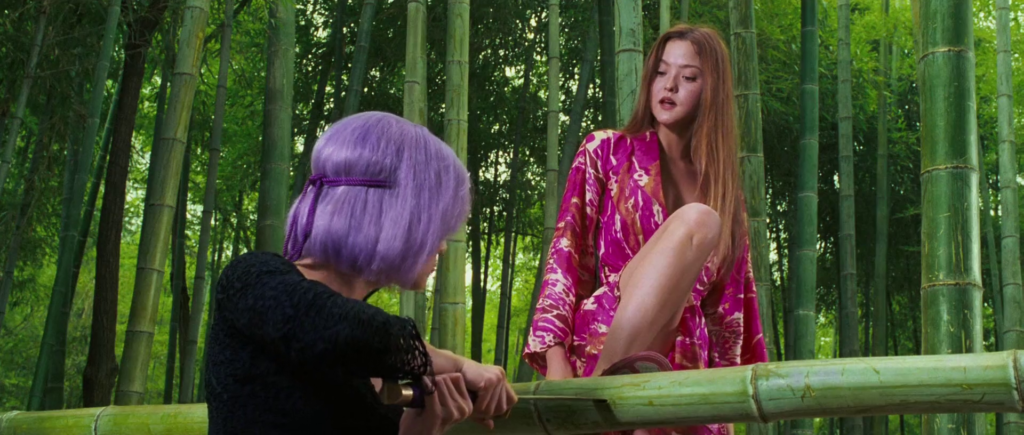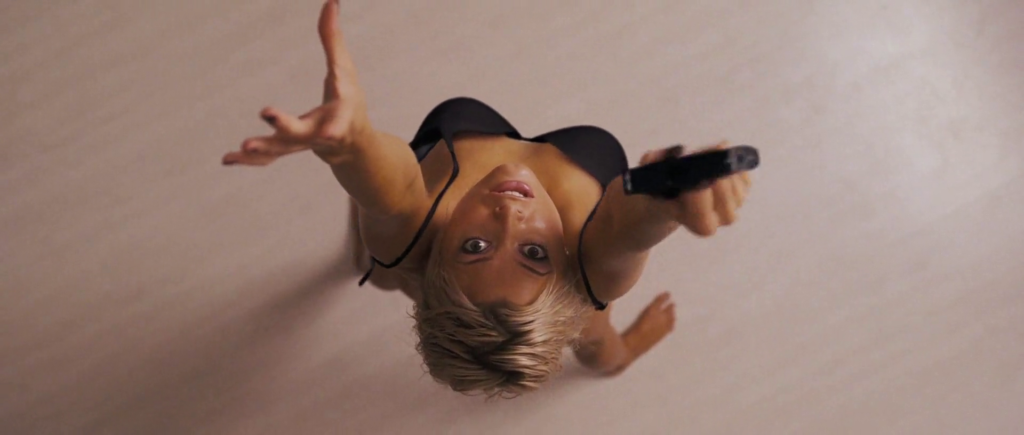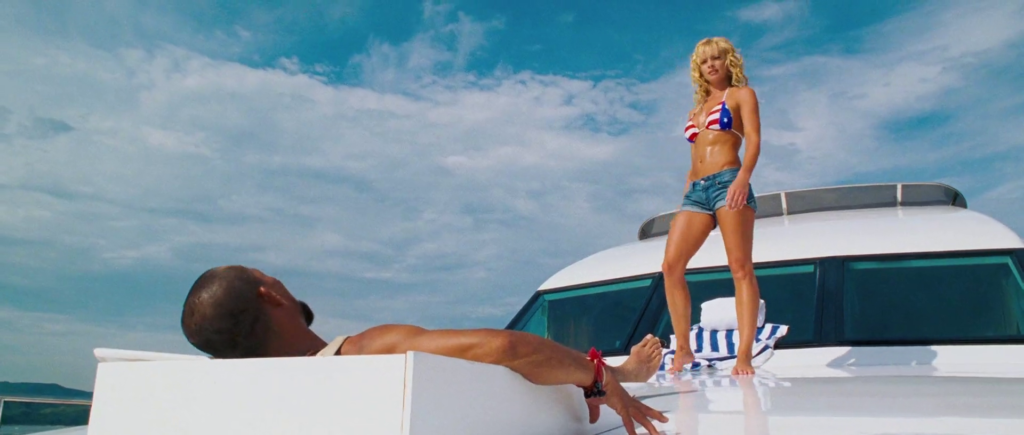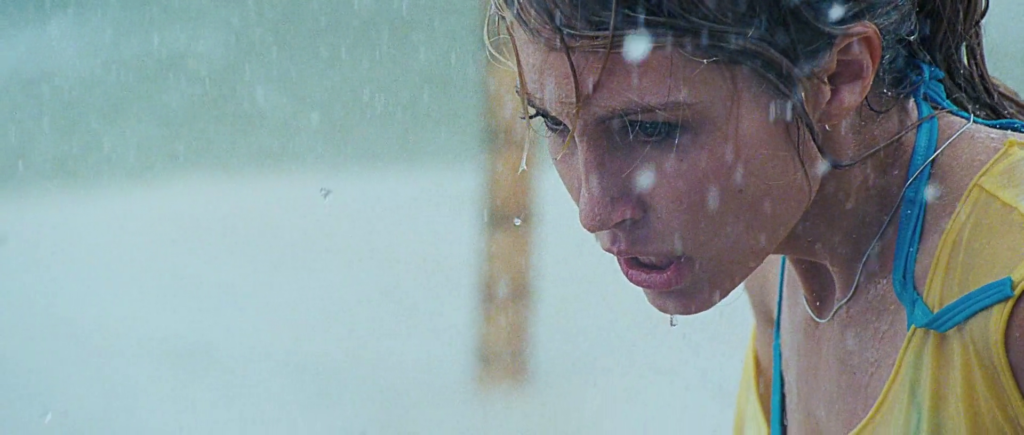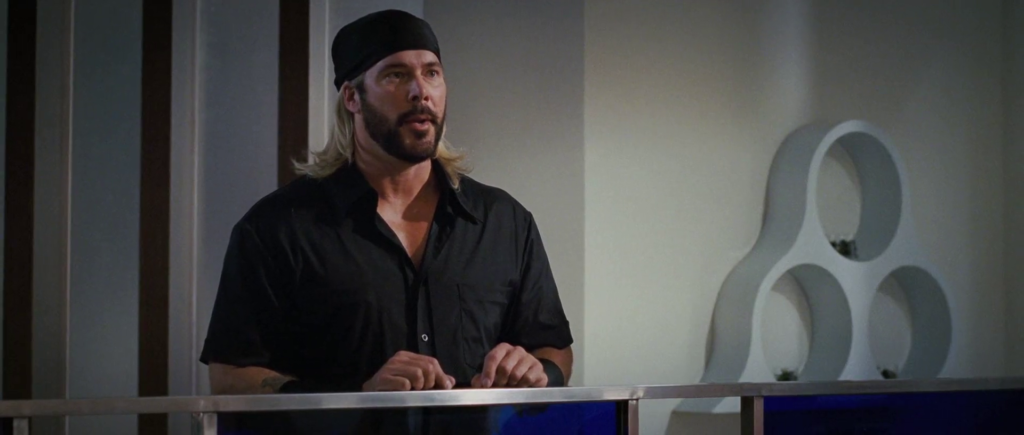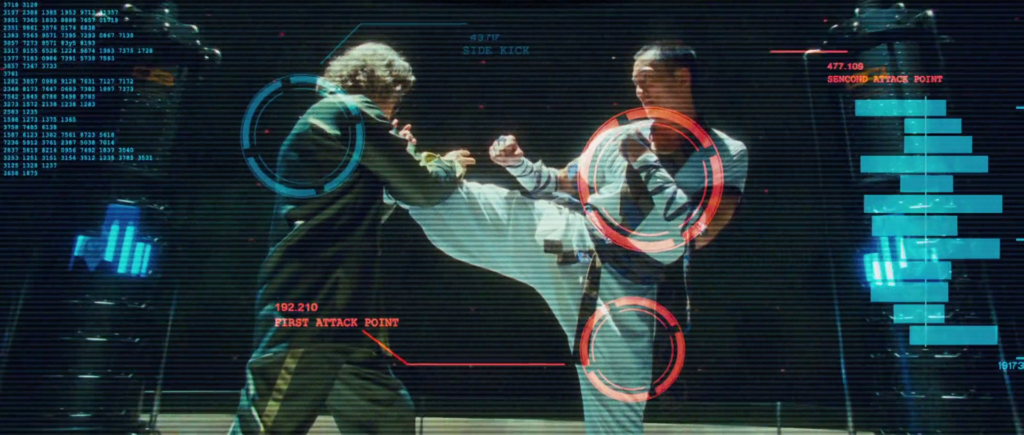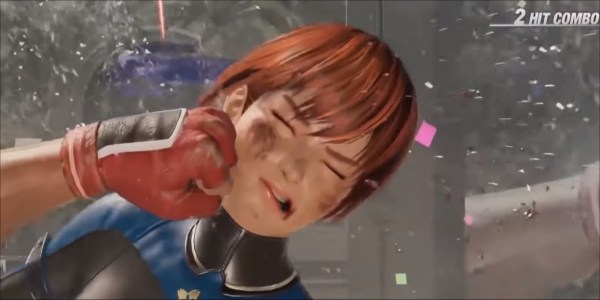This happens to be my 200th post on I Choose to Stand, and I’ve put together something special… After all the shit-talking I’ve done about Dead or Alive Xtreme 3, I thought that it was pretty unfair of me to just dismiss it off-hand. As a result, I picked up a copy of the PS Vita version (like hell I was going to get caught playing this on my TV) and set about writing this review. Is it as bad as I had predicted? Read on to find out…
Note that the game is very careful to highlight that you can use the touch controls to manually jiggle the girls’ boobs. Stay classy Tecmo, stay classy…
DOAX3 is a… umm… well, it’s pretty hard to place it within a genre really. The most succinct way to describe it is that it’s a minigame collection based around a voyeuristic appreciation of sexiness, with some very basic happiness-management and dating sim elements layered over it. The first thing that really struck me about DOAX3 was just how similar it felt to previous DOAX games – I had previously played a little Dead or Alive: Paradise, but even that cursory glance was enough to notice that DOAX3 has basically the exact same menu-based user interface and layout. Hell, even the locations are the basically the same, and the thumbnails look very similar too (the Sports Shop in particular looked almost identical to me). The game is also clearly carrying over a number of art assets from Dead or Alive 5: Last Round – the characters themselves appear to be updated, but the swimsuits and even some of the environments have been very clearly shared between the two releases (and the bulk of the “new” swimsuits are just palette-swaps).
Perhaps most egregiously, I also noticed that a very significant portion of the game’s gravure videos are lifted from previous games in the franchise, reusing the exact same animations and even camera angles. I didn’t do a comprehensive count, but when cross-referencing Hitomi’s scenes in Dead or Alive: Paradise, I noticed that quite a few were reused wholesale, such as her riding on inflatable orca in the pool, her very cute improvised dance session, eating an ice cream cone and going for a bike ride. They also directly lifted Hitomi’s Private Paradise scene from Dead or Alive 5: Ultimate‘s DLC. I’m sure there are more of Hitomi’s scenes reused that I just haven’t encountered in DOAX3 yet, and the fact that I’ve found this much recycling for just a single character is kind of a demonstration of how little effort seems to have gone into differentiating DOAX3 from previous games in the franchise. I don’t want to accuse Team Ninja of being lazy, but the sheer amount of recycled content makes me feel like they basically just put in a minimal amount of effort on this release – hell, they couldn’t even expand the cast past 9 girls, possibly because this would have required them to add in more items for the dating sim elements.
Controversially, DOAX3 also removed some features from previous DOAX games – in particular, the Marine Race (aka, Jet Skiing) and Water Slide have been removed entirely, presumably because the marina has been excised from the game (for no apparent reason other than lack of effort). The cast of characters is also kind of disappointing. Series mainstays, such as Christie, Tina and Lei Fang have been replaced with DLC characters from DOA5. I know that they put this up to a popular vote, but the fact that some of the main characters of the series have been excluded and have been replaced with people that we don’t have any sort of story context for makes the game feel significantly less true to the DOA name (naturally, the two highest-voted new characters in the poll were the two biggest fetish bait – the lolita schoolgirl, Marie Rose, and the biggest tits and ass in the franchise, Honoka).

On the plus side though, Team Ninja seems to have put most of their effort into the graphics and physics engines, which definitely shows. The PS4 version obviously looks superior, but the PS Vita’s graphics are pretty damn good as well. Aside from a reduced framerate and resolution, the only really noticeable downgrades in the handheld are, for whatever reason, that the girls don’t get suntanned and can’t suffer SFW “wardrobe malfunctions” during some of the minigames – hardly make-or-break issues, but their exclusion is a little odd. The game’s physics engine is also probably the best that the series has ever seen – DOA is notorious for its hilarious (often intentionally-so) boob-physics, but DOAX3 seems to have stepped up its game in a surprisingly-positive way. The boob physics appear to be much more, uh, natural this time around… plus they added butt physics too, because Team Ninja understands priorities. The only really annoying graphical issue is one that has persisted throughout the series – hair physics. The characters’ hair goes crazy all the time, clipping through characters, objects and generally just going bonkers while the physics try to make sense of their programming. Some of the swimsuits have the same sort of issues, particularly the leis (which are apparently glued to the girls’ nipples or something) – the dangle physics don’t seem to have been figured out yet, which is probably why we don’t have any men in the DOAX series yet (BADUM TISH!). Still, for a game based almost entirely around sexiness (and with so much recycled content), the emphasis on the graphics was probably the right call to make, with all of the girls looking even better than they already did in DOA5.
The actual gameplay of DOAX3 takes place over the course of 14 in-game days, each split up into morning, afternoon, evening and night-time segments. The morning, afternoon and evening segments can be used to play minigames, relax or buy new swimsuits, while the night-time segments basically just give you the opportunity to gamble your cash at the casino. There’s about one line of story for each of the girls which explains what they’re doing on the island, but beyond that there’s basically no overarching plot – you’re just on the island and you get to choose how you want to spend your vacation time. The game does present you with missions in order to earn “Zack Dollars”, upgrade your “Owner Level” and increase your girls’ happiness levels, but it’s really just up to you whether you want to accomplish these missions or not. The only real goal is to make the girls happy by the end of your vacation – the happier they are, the higher your final score is.

The bulk of the gameplay in DOAX3 revolves around a series of 6 minigames. Of these, volleyball is by far the funnest and most rewarding. It’s not particularly deep, but there is some actual strategy involved in winning and skill involved as you learn how to defend, set up plays and master better (but more risky) serves. The payouts are also considerably higher than any other minigame, so you’re probably going to spend most of your time playing this unless you’re just hunting missions all of the time. It’s also legitimately quite fun to play, with a reasonable amount of challenge involved.
The second minigame is tug of war, in which you just move the analog stick left to pull, or right to feint, and tap X to regain balance. However, when I’m playing I don’t find that there’s much reason to do anything other than just tug it constantly (heh heh). Easy-level opponents don’t really react quick enough to fight back, so if you just tug then you’re pretty much guaranteed a win. Normal-level opponents require a bit more strategy, but even when I’d open with a feint trying to be strategic, I found that I was losing a lot more. I just ended up tugging it mindlessly again after that (heh heh), and won 3 matches in a row with no effort. Honestly, winning in tug of war seems very shallow and is basically a crapshoot, because feints are unpredictable and can cause you to instantly lose if they pull one off. It can be fun as a diversion, but it gets stale pretty quickly.
The third minigame is butt battle, which feels like the most stripped-down (heh heh) fighting game ever. Basically, press O to bash the other girl in the butt with your own butt, and use the analog stick to dodge or sidestep. However, I have found that there isn’t a lot of reason to do much more than just hammer on O to win most of the time. For normal-level opponents and higher, butt battling feels a little more like a rhythm/timing-based game as you just wait to see if your opponent dodges or not. It’s still pretty shallow and doesn’t really seem to exist for much more reason than to make you laugh and appreciate the butt physics (oh and to show off the wardrobe malfunctions on PS4).
The fourth minigame is beach flags, which is basically just an HD remaster of NES Track and Field. Basically, wait until the game says go, then button mash X as fast as possible and then press O to dive for the flag before the other player does. It literally takes seconds to finish (heh heh) and, if you’re like me and can’t button mash for shit, then winning against hard-level opponents is basically impossible. It’s just not particularly engaging or skill-based, providing little more than an opportunity for quick cash if you don’t want to spend a lot of time on a minigame for whatever reason.

The fifth minigame is pool hopping. It’s sort of like a speed-based QTE game, where you jump to platforms marked with one of the Playstation face buttons on each one. Platforms are spaced apart at different distances, with a tap of any of the face buttons being required to make a small jump and a hold being used to jump over longer distances. In addition, players can use the face button that matches the platform to perform the QTE to gain additional cash. Honestly, I think pool hopping might be my least-favourite minigame, mainly due to the controls – the difference between a button press and a hold is miniscule, making it super easy to accidentally throw yourself into the pool and then scream in frustration at the annoying controls. Plus the game emphasizes speed, so it’s very easy to screw up as you try to stay ahead of your opponent. I find that I can’t even finish it if I’m trying to match the buttons on the platforms, so I usually just focus on whether my next move is a hold or a tap. Pool hopping definitely takes practice, which I guess makes it more interesting than most of the other minigames, but the frustratingly finicky controls take a lot of patience to acclimate to.
The last minigame is rock climbing, which was added in place of Marine Race and Water Slide. It’s literally just 40 seconds of QTEs, making it arguably the most boring minigame in the entire collection. It feels like it’s just an overglorified gravure video with some button prompts overlaid on it, but at least you get Zack Dollars for completing it (which is far more than I expected). Once you’ve finished it once, you’ve seen everything it has to offer.
In addition to the main minigames, the game also features a casino where players can choose to gamble their Zack Dollars with the other girls. The three offerings (blackjack, poker and roulette) are certainly functional but are very basic even in comparison and lack much visual flair to keep them interesting for long periods of time. Roulette seems like the most throwaway since it’s almost 100% luck based whether you make any sort of payout. I spend most of my time in the casino on blackjack and poker (which is using the five-card draw rules rather than Texas hold ’em, sadly), since there’s actually some skill involved. Poker in particular is pretty easy to rake in money with consistently if you know how to play, since you can just bluff opponents off the cards most of the time if they have weak hands (and as long as you don’t just go in with awful hands yourself all the time). A poker session can a pretty fun diversion sometimes, but most nights I just skip going to the casino since it doesn’t really change or give you much reason to keep going back aside from farming for money. Oh, also, for a game that is all about sexiness, I’m also disappointed that Team Ninja still won’t actually put animations of the girls you’re playing against in the casino. Instead, they just show bubbles with the characters’ heads in them acting as an avatar (the same system used in previous DOAX games). It once again smacks of a modicum of effort being applied, and is doubly unsatisfying since this is a game about sexiness – you think they’d play that up shamelessly here. As a consolation, we get images of the girls on all the playing cards, but it’s not much of an effort (especially since the pictures are basically all promotional renders, which might have taken an afternoon of work to apply to all the in-game cards).

Aside from the minigames, the other main feature in vacation mode is the ability to watch the gravure videos of the girls relaxing around the island. While they’re clearly intended to be the game’s main draw, I find that they aren’t particularly well-integrated into the game. You can choose to initiate these videos by visiting parts of the island to relax, but this is where, one of the major failings of all of the DOAX games comes into play – the games are clearly meant to be playing up sexiness, but triggering these scenes uses up a portion of your very finite schedule with no practical gain (as far as I can tell, they don’t even give you satisfaction, which is mind-boggling). Time you spend on relaxing could have easily been spent on volleyball, which is both funner and provides you with currency to buy new swimsuits. It’s like the game’s systems are actively discouraging you from doing the very thing that the game is designed to do, which is frustrating (good thing a quick Youtube search will give you all the DOAX3 gravure videos you could ever want without wasting any of your vacation time or spending a penny). This is my general problem with sexy/porn games – the “game” parts tend to clash with the actual point of the game (and where all the effort was actually directed… in this case, appreciating skimpily-dressed girls). While I’d probably rather be appreciating the gravure videos, I’ve got no practical reason to do so, which just ends up highlighting how unsatisfactory the gameplay itself is. I think it would be more interesting if the game gave you higher satisfaction yields for choosing to relax, while continuing to give you good money and satisfaction yields for completing activities, which would at least give you a strategic reason to pick between the two options.
It’s also worth pointing out that all of the minigames take up the same amount of in-game time, whether you spend 15 seconds playing beach flags (or falling into the pool on the first button prompt in pool hopping), or spend 2 or 3 minutes on a heated game of beach volleyball. It feels kind of strange to me that you can end up completing a whole 14 day vacation in probably 10-15 minutes if you choose to blaze through the shorter games. It might have been a little more interesting if there was more of a time-management risk/reward factor, where you can play volleyball for longer times but with a greater payout if you win, compared to the shorter games which would have lower payouts but smaller time investment, meaning you can play more games. As it is, there doesn’t seem to be much reason to play anything other than volleyball most of the time, since it’s both the funnest activity and the highest paying of them all.
That said, the emphasis on volleyball just highlights how poor the other games are. A glance at the trophy statistics shows that (as of the time of this writing), the percentage of players with 10 wins in each of the minigames is as follows: volleyball (41.3%), rock climbing (32.2%, shockingly), beach flags (27.6%), butt battle (26.9%), tug of war (26.8%) and pool hopping (20.5%). As you can see, the contrast between volleyball and all the other games is pretty stark. With only ~30% of players even hitting Owner Level 10 (about the equivalent of completing 3 vacations), it makes me wonder how many people grew tired of the game’s offerings within a couple hours, or how many spent all of their time on the only really good minigame on offer.

The one big addition to DOAX3 is the new “Owner Mode”, which allows you to play as a caretaker who Zack has entrusted ownership of the island over to. The basic ideas kind of play out similarly to a management game (think like the absolute simplest Football Manager ever). You can start a vacation as the owner if you’d like, or you can switch to it seamlessly at any point in the menus. The point of playing in owner mode is to maximize the happiness of all of the girls on the island as best as you can, which is where the game’s basic dating sim mechanics come into play. Each girl has favourite items, food and colours. While the game doesn’t just go out and say what each girl likes this time (aside from their colours, which makes it basically impossible to give them a bad gift wrapping), a quick Google search makes it easy to figure out what their preferences are. I know that some people enjoy dating sim elements in games, but I have always found them to be an absolute bore at best, and an irritating chore at worst since I’m just following a set of instructions to get the outcome I want. There’s no real strategy to it, you just do what the game expects you to to get the girl to accept your gifts. The only real reason it seems like they’ve thrown this in here is for the bonus sequences where the girls will try on their new swimsuit in front of you (giving you the option to peek, but of course this ends up being both SFW and exceptionally pervy).
Beyond happiness-management, owner mode also gives you a second pool of Zack Dollars which can be acquired by completing missions and gambling in the casino, and which can be spent to gift girls new swimsuits. Owner mode also gives you access to the Owner Shop, where exclusive swimsuits can be purchased. This is where the game’s microtransactions come into play, because of course they do. The microtransaction system (known as “Premium Tickets”) is disgusting – as you would expect, they allow you to buy premium swimsuits from the Owner Shop for real world money. This is egregious for a number of reasons. For one thing, many missions require you to buy a girl some special swimsuit from the Owner Shop. However, most missions don’t tend to have particularly great payouts, so the odds of you having enough Zack Dollars for the better ones have clearly been designed to incentivize the sale of Premium Tickets (unless you get really lucky in the casino). With the more expensive swimsuits running 14+ Premium Tickets, you’re looking at $10 (Canadian) or more just to gain the privilege of dressing your virtual characters in a single swimsuit that’s already in the game… and that’s before factoring Team Ninja’s inevitable future DLC plans (and their demonstrated history of horrifically shitty business practices there). Also, the contents of the Owner Shop at any one time are semi-random meaning that, like the shittiest free-to-play games, they force you to spend money to get the items you want because they might not be there when you can afford them. Microtransactions are just such a shitty thing to include in a full-priced game like this, especially when they have been so obviously manufactured to push players into spending money on them, and doubly-so on a game which seems to have put as little effort into it as this.
The other big feature of owner mode is your Owner Level, which represents how much work you have put into the game. It is also tied into some special swimsuit and item unlocks, but unfortunately the game expects you to put in an absolutely ridiculous amount of grinding (heh heh) to get stuff. Some of this is stuff that should be an absolute necessity for this sort of game, such as the ability to freaking pause gravure videos, which requires you to be a mind-boggling level 80 to unlock (a feature which was available from the start in Dead or Alive 5: Last Round, a game where sexiness and taking photos isn’t even the whole point of the experience). Honestly, the amount of grinding that the game expects out of you is absolutely ridiculous considering how little content or substance is on offer. As much as I want the ability to pause gravure videos, the thought of having to grind to level 80 makes this feel like the game is wasting my time.
Oddly enough, the least-flashy aspect of owner mode might just be the best part since it sticks to the central philosophy of sexiness – the ability to just sit back and watch the girls doing their activities without having to take direct control. This can be pretty relaxing, particularly if you’re enjoying a good volleyball match, and gives you the opportunity to take (inevitably pervy) pictures. The lack of a pause ability right out of the box is even more egregious in this mode because snapping quality photos is very difficult to pull off when you can’t anticipate the girls’ movements. Still, snapping photos is pretty fun and the in-game controls are robust enough that you can get some really great shots if you practice.

Honestly, DOAX3 feels like the sort of game which would have greatly benefited from a next gen design philosophy overhaul. How much cooler would this have been though if New Zack Island had used an open hub world system where you take control of one of the girls and navigate the island, relaxing and performing activities to your heart’s content? If nothing else, this would have been significantly more interesting and exciting than the existing menu-based UI system. The game could also do with some co-op functionality, especially since you spend the entire vacation with a partner anyway. Multiplayer was actually a feature from DOAX2 which was removed in this game, co-op could have been a great step forward. Naturally, I understand that Tecmo-Koei probably doesn’t expect the game to sell very many copies, so they probably figured that they couldn’t justify the sort of work that would be required to rewrite the game from the ground up. However, with Team Ninja’s insistence on recycling content, we’re left effectively playing an early Xbox game, just with shinier graphics than before. This already didn’t cut it when DOAX2 dropped in 2006, and it’s even more noticeable in a world where identically-priced games feature more refinement and meaningful content than ever.
As you can probably tell from everything up to this point, I don’t think that DOAX3 is a particularly good game. However, in spite of all the shittiness on display, I have to admit that I was actually finding it to be somewhat enjoyable in spite of itself. It’s a strangely relaxing change of pace from my usual sort of gaming entertainment, as I get smacked around in Bloodborne, Fire Emblem Fates: Conquest and XCOM 2… and then use Rainbow Six: Siege to cool off. DOAX3 just lets me lean back and enjoy some minimal challenge while basically giving me the ability to do whatever I want to on my 14 day vacation. It’s kind of difficult to review in that sense, because it’s clearly extremely niche, lacking in meaningful content and difficult to quantify. I can kind of understand how it can get reviews as low as a 1.5/10, but I can also see why someone would give it something as high as a 6/10 if they were being very forgiving of its obvious flaws. For my own part, the lack of content, ridiculous insistence on grinding to make up for said lack of content, disconnect between gameplay and sexiness, and Team Ninja’s seeming overwhelming laziness push it into the negative side, but there is some sort of intangible relaxation that the game brings which make me feel like being at least somewhat generous to it. I don’t exactly recommend the game, but it is definitely going to only appeal to a certain kind of niche gamer.
4/10
…Oh, and did you think I’d not bother to mention anything about sexism? I decided to set that aside for my feelings on the game, but honestly I didn’t really have a particularly difficult time doing so. Maybe the shittiest sort of SJW-type would bristle at the very idea of this game existing, but I didn’t really care all that much when I was playing. The voyeuristic aspects of the game can be rather pervy at times and I sometimes have to stifle a laugh at how silly the game is when it’s trying to be sexy, but the game isn’t particularly offensive. It’s also strangely chaste in some ways – while the girls enjoy looking sexy, they seem to have little interest in sex itself (especially since the series’ more sexily-dominant characters, Tina and Christie, didn’t make the cut). Naturally, this has some troubling implications in itself, but at least the girls are all presented as “look, don’t touch” and beyond attainability, rather than just being sex puppets for our gratification.
If DOAX3 had come overseas, I honestly don’t think that there would have been much of a furor. Hell, I was at an EB games just this morning and saw Onechanbara and a bunch of other typical “sexy Japanese” games on sale without giving a shit. Of course, Tecmo-Koei used the controversy that grew from the lack of a Western release to bait even more controversy for sales (the announcement of “Owner Mode” was probably the most obvious example of this), while PlayAsia basically turned it into an art, effectively netting them their intended audience without having to spend a dime on localization. Really though, I think there’s room for this kind of game to exist – as I have emphasized all through my review, DOAX3 is a game all about sexiness, so if it wants to be sexy then fine. My problem is when otherwise-serious games, particularly ones with an exclusively-male-gaze version femininity in them (such as Metal Gear Solid V) come out and end up dominating the market share. We’re at a point where there are enough positive female characters, from Tomb Raider, to Life is Strange, to the upcoming Horizon: Zero Dawn that I think we can afford a cheesy bit of fantasy in the form of DOAX3 without setting women back decades.

